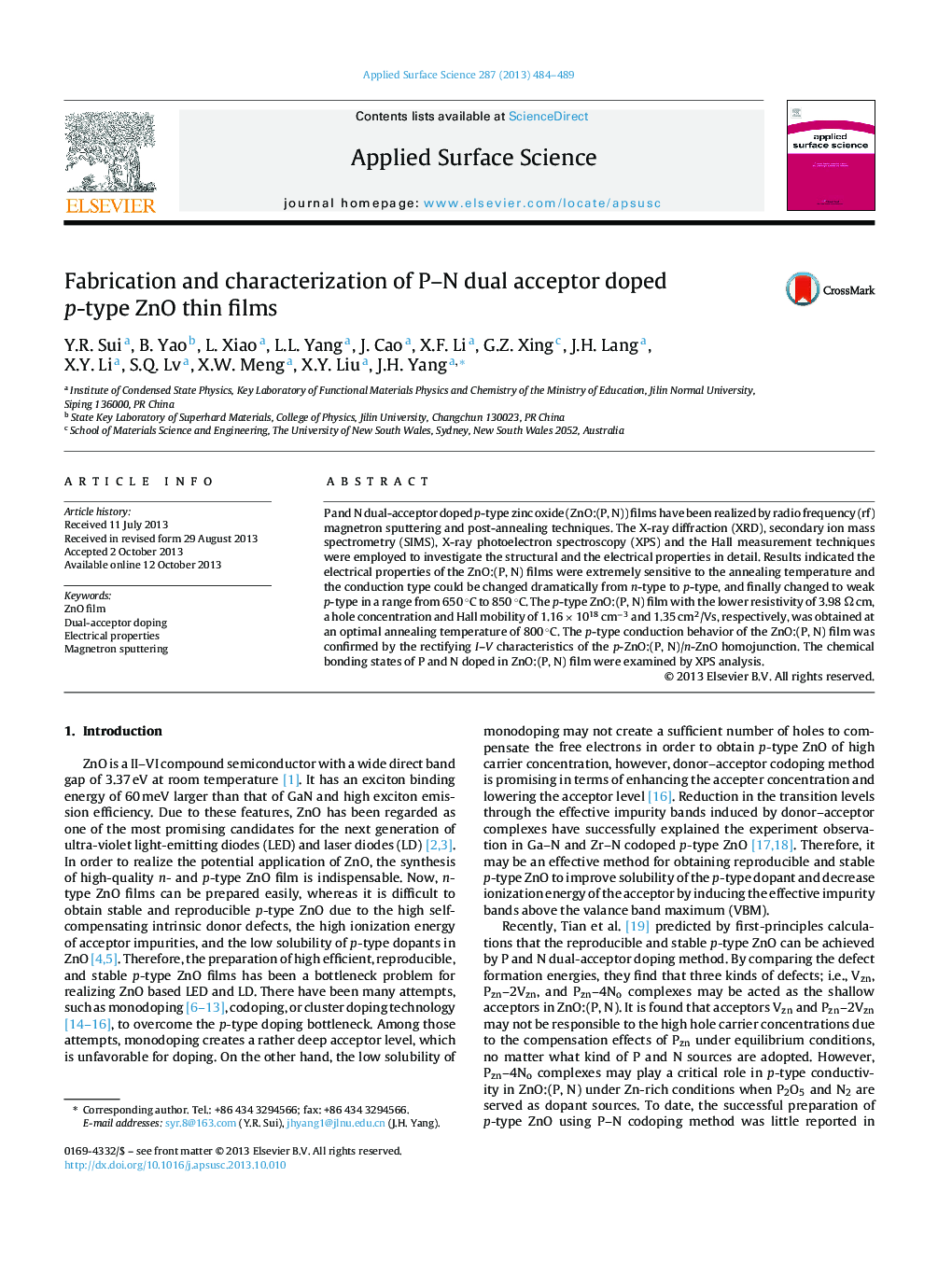| Article ID | Journal | Published Year | Pages | File Type |
|---|---|---|---|---|
| 5359420 | Applied Surface Science | 2013 | 6 Pages |
Abstract
P and N dual-acceptor doped p-type zinc oxide (ZnO:(P, N)) films have been realized by radio frequency (rf) magnetron sputtering and post-annealing techniques. The X-ray diffraction (XRD), secondary ion mass spectrometry (SIMS), X-ray photoelectron spectroscopy (XPS) and the Hall measurement techniques were employed to investigate the structural and the electrical properties in detail. Results indicated the electrical properties of the ZnO:(P, N) films were extremely sensitive to the annealing temperature and the conduction type could be changed dramatically from n-type to p-type, and finally changed to weak p-type in a range from 650 °C to 850 °C. The p-type ZnO:(P, N) film with the lower resistivity of 3.98 Ω cm, a hole concentration and Hall mobility of 1.16 Ã 1018 cmâ3 and 1.35 cm2/Vs, respectively, was obtained at an optimal annealing temperature of 800 °C. The p-type conduction behavior of the ZnO:(P, N) film was confirmed by the rectifying I-V characteristics of the p-ZnO:(P, N)/n-ZnO homojunction. The chemical bonding states of P and N doped in ZnO:(P, N) film were examined by XPS analysis.
Related Topics
Physical Sciences and Engineering
Chemistry
Physical and Theoretical Chemistry
Authors
Y.R. Sui, B. Yao, L. Xiao, L.L. Yang, J. Cao, X.F. Li, G.Z. Xing, J.H. Lang, X.Y. Li, S.Q. Lv, X.W. Meng, X.Y. Liu, J.H. Yang,
